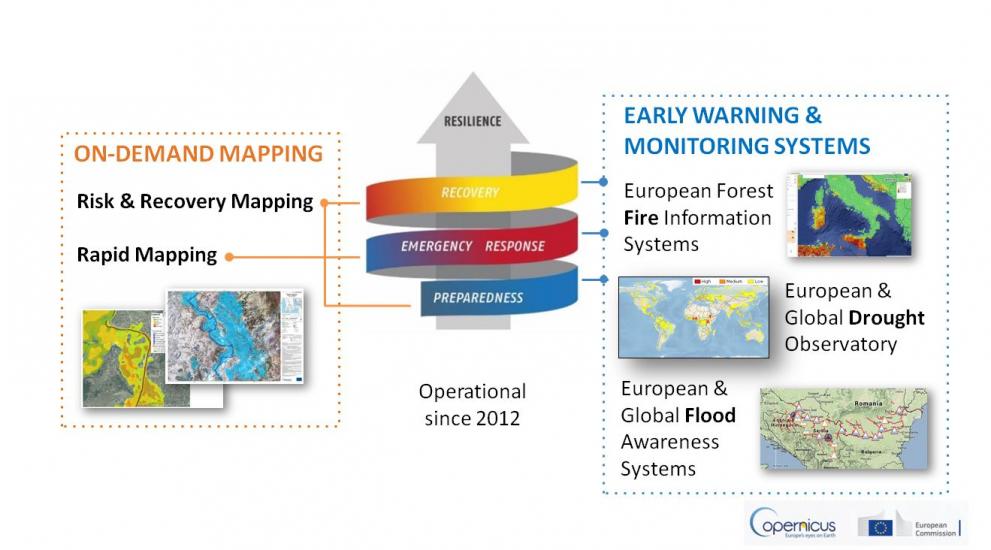
The JRC hosted the 1st joint meeting of Copernicus Emergency Management Service users.
Different communities from within Europe shared their experience in using the service as well as their requirements for its future evolution.
The two-day meeting was organised on 21-22 May 2019 in Stresa (Italy), bringing together about 220 participants from the different user communities (European and international) of the different service components, the European Commission, service providers and other actors, including the European Space Agency and the European Environment Agency.
For the first time since the Copernicus Emergency Management Service (CEMS) was launched in 2012, the annual meetings of the four individual service components were held together.
As every year the discussions allowed to collect user requirements which are key for the future evolution of the service.
"With increased challenges, the service has to continue to evolve and improve", said Dan Chirondojan, JRC Director for Space, Security and Migration when opening the meeting. "By bringing for the first time together the different expert groups around floods, forest fires, droughts and satellite based disaster mapping, we will be able to create stronger links and synergies and work transdisciplinary in order to increase our resilience to disasters."
Accurate geo-spatial information based on satellite imagery
The Copernicus EMS, implemented by the JRC, provides all actors involved in the management of natural and man-made disasters worldwide with timely and accurate geo-spatial information based on satellite imagery.
Europe is providing this increasingly efficient service free of charge to actors in emergency and disaster management.
By using satellite imagery, models and in-situ observations, it provides information all year round (365 days, 24 hours) on upcoming or ongoing disasters worldwide.
Through the service, Europe supports countries around the world in saving lives, coping with disasters once they occur, and in preparing better for future disasters, overall reducing the impact of disasters and making everyone's life safer.
Peter Billing, Head of Unit for Security and Situational Awareness at the Commission department for European Civil Protection and Humanitarian Aid Operations (DG ECHO), stressed the importance of the service, stating that "EMS has vastly improved since its launch in 2012 and is now an essential element of our emergency management toolbox."
The Copernicus EMS
The Copernicus EMS consists of two components:
- a mapping component
- an early warning and monitoring component

Mapping component
The mapping component provides, on request and for specific areas, geographical information (maps) on the impacts and risks related to a specific disaster event occurring anywhere in the world. It supports all phases of the disaster management cycle: preparedness, prevention, disaster risk reduction, emergency response and recovery.
Early warning and monitoring component
The early warning and monitoring component consists of three different systems:
- The European Flood Awareness System (EFAS) which provides overviews on ongoing and forecasted floods in Europe up to 10 days in advance.
- The European Forest Fire Information System (EFFIS) which provides near real-time and historical information on forest fires and forest fire regimes in the European, Middle Eastern and North African regions.
- The European Drought Observatory (EDO) which provides drought relevant information and early warnings for Europe.
These systems are at global level completed by the Global Flood Awareness System (GloFAS), the Global Wildfire Information System (GWIS) and the Global Drought Observatory (GDO).
Copernicus EMS - a key service for countries both in- and outside Europe
The Copernicus EMS has made major steps towards becoming a key service for countries both in- and outside Europe. Recently the service has increased its capacity, extended its portfolio to also cover droughts, and has made major steps towards integrating the two components. In particular, the early warning and monitoring systems are increasingly used to target satellite image acquisition for the mapping of specific disaster events.
For more info visit the Copernicus Emergency Management Service website.
Related Content
Details
- Publication date
- 24 May 2019
